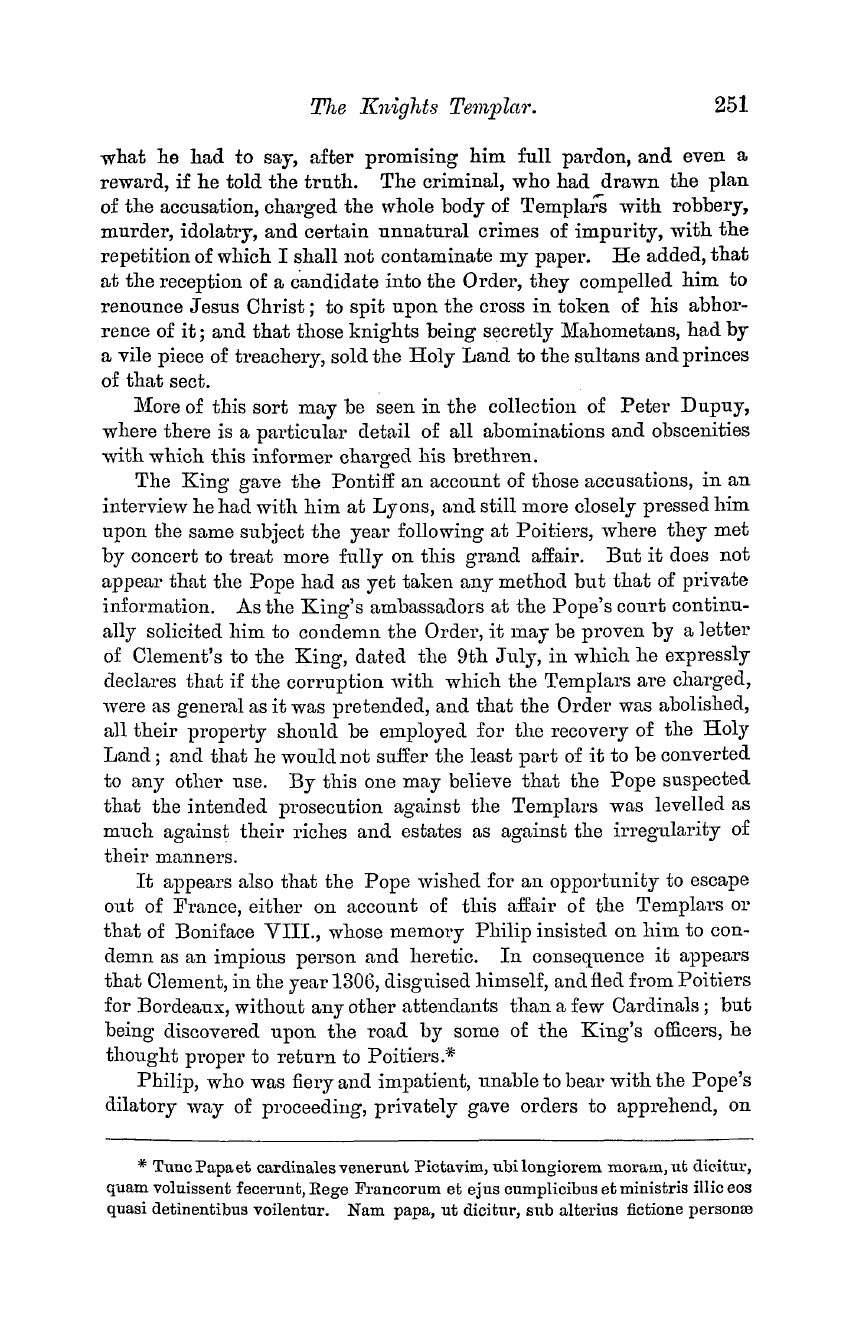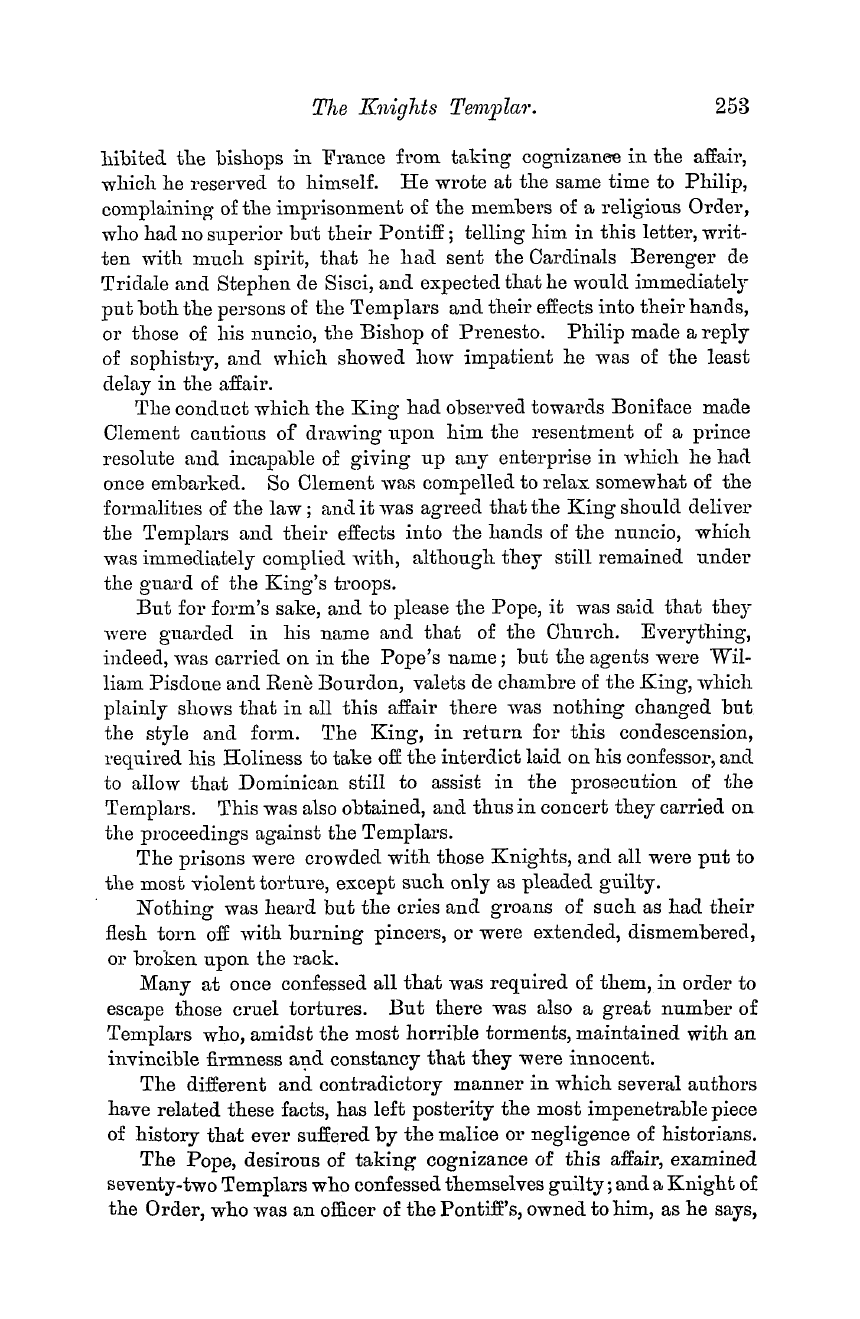-
Articles/Ads
Article EARLY HAUNTS OF FREEMASONRY. ← Page 4 of 5 →
Note: This text has been automatically extracted via Optical Character Recognition (OCR) software.
Early Haunts Of Freemasonry.
up by its neighbour the banker . But the glories of the Cock have not yet departed ; the Rainbow , Dick ' s , and the Cheshire Cheese still remain to gratify the appetites of Templars and the occasional visitor . Fleet Street , however , is no longer a favourite haunt of showmen .
Occasionally may be seen in the windows of Land and Water offices the plaster cast of an octopus or baby elephant , or a trophy of Zulu assegais and knobkerries . But the proprietors of that well-known journal are in nowise ambitious of rivalling the shows for which , as far back as the reign of Queen Elizabeth , this thoroughfare was
noted . Ben Jonson in his " Every Man in his Humour , " makes mention of " a new motion of the city of Nineveh , with Jonas and the whale at Fleet Bridge . " In 1611 were on view " the Fleet Street Mandrakes . " In 1702 , in Bell ' s Yard , was to be seen a model of Amsterdam , thirty feet long by twenty feet wide , which had taken
twelve years in the making . Among other curiosities—the reader may prefer describing some of them as monstrosities—may be mentioned a child , fourteen years old , without thighs or legs , and eighteen inches high , at the Eagle and Child , a grocer ' s shop , near Shoe Lane ; a Lincolnshire ox , nineteen hands high and four yards long , at the White Horse ; sundry giants and giantesses , such as an Essex woman ,
named Gordon , who , though only nineteen years of age , stood seven feet high ; an Italian giantess over seven feet and weighing 425 lbs . ; Edward Bamford , seven feet four inches , who died in 1768 , and to secure whose body for Surgeons' Hall a large sum was offered , though unsuccessfully ; and more wonderful still a German dwarf , one
Matthew Buckinger , born in 1674 , who was without hands , legs , feet , and thighs , yet , nevertheless , could write , thread a needle , shuffle a pack of cards , and p lay skittles . But certainly the most interesting and important of these attractions "was the waxwork show of Mrs . Salmon , the Madame Tassaud of her day ; and as the respectable old
dame died in 1812 , there must still be living not a few Londoners who , in their schoolboy days , saw and admired her long array of the waxen effigies of royal and other personages . The show was held at No . 17 , erroneously described as Henry VII . ' s and afterwards Cardinal Wolsey ' s Palace . After having done duty for many years
as Nando ' s Coffee House , it was occupied as a show place by the aforesaid Mrs . Salmon , at whose death the collection was sold for £ 500 , and removed to Water Lane , a turning out of Fleet Street further eastward , but on the same side of the way , where , some time afterwards , it met with a similarly untoward fate to that which befel the late
Artemus Ward ' s wax figures at Utica , U . S . A . The reader need hardly be told that , in the course of its existence
Note: This text has been automatically extracted via Optical Character Recognition (OCR) software.
Early Haunts Of Freemasonry.
up by its neighbour the banker . But the glories of the Cock have not yet departed ; the Rainbow , Dick ' s , and the Cheshire Cheese still remain to gratify the appetites of Templars and the occasional visitor . Fleet Street , however , is no longer a favourite haunt of showmen .
Occasionally may be seen in the windows of Land and Water offices the plaster cast of an octopus or baby elephant , or a trophy of Zulu assegais and knobkerries . But the proprietors of that well-known journal are in nowise ambitious of rivalling the shows for which , as far back as the reign of Queen Elizabeth , this thoroughfare was
noted . Ben Jonson in his " Every Man in his Humour , " makes mention of " a new motion of the city of Nineveh , with Jonas and the whale at Fleet Bridge . " In 1611 were on view " the Fleet Street Mandrakes . " In 1702 , in Bell ' s Yard , was to be seen a model of Amsterdam , thirty feet long by twenty feet wide , which had taken
twelve years in the making . Among other curiosities—the reader may prefer describing some of them as monstrosities—may be mentioned a child , fourteen years old , without thighs or legs , and eighteen inches high , at the Eagle and Child , a grocer ' s shop , near Shoe Lane ; a Lincolnshire ox , nineteen hands high and four yards long , at the White Horse ; sundry giants and giantesses , such as an Essex woman ,
named Gordon , who , though only nineteen years of age , stood seven feet high ; an Italian giantess over seven feet and weighing 425 lbs . ; Edward Bamford , seven feet four inches , who died in 1768 , and to secure whose body for Surgeons' Hall a large sum was offered , though unsuccessfully ; and more wonderful still a German dwarf , one
Matthew Buckinger , born in 1674 , who was without hands , legs , feet , and thighs , yet , nevertheless , could write , thread a needle , shuffle a pack of cards , and p lay skittles . But certainly the most interesting and important of these attractions "was the waxwork show of Mrs . Salmon , the Madame Tassaud of her day ; and as the respectable old
dame died in 1812 , there must still be living not a few Londoners who , in their schoolboy days , saw and admired her long array of the waxen effigies of royal and other personages . The show was held at No . 17 , erroneously described as Henry VII . ' s and afterwards Cardinal Wolsey ' s Palace . After having done duty for many years
as Nando ' s Coffee House , it was occupied as a show place by the aforesaid Mrs . Salmon , at whose death the collection was sold for £ 500 , and removed to Water Lane , a turning out of Fleet Street further eastward , but on the same side of the way , where , some time afterwards , it met with a similarly untoward fate to that which befel the late
Artemus Ward ' s wax figures at Utica , U . S . A . The reader need hardly be told that , in the course of its existence































































